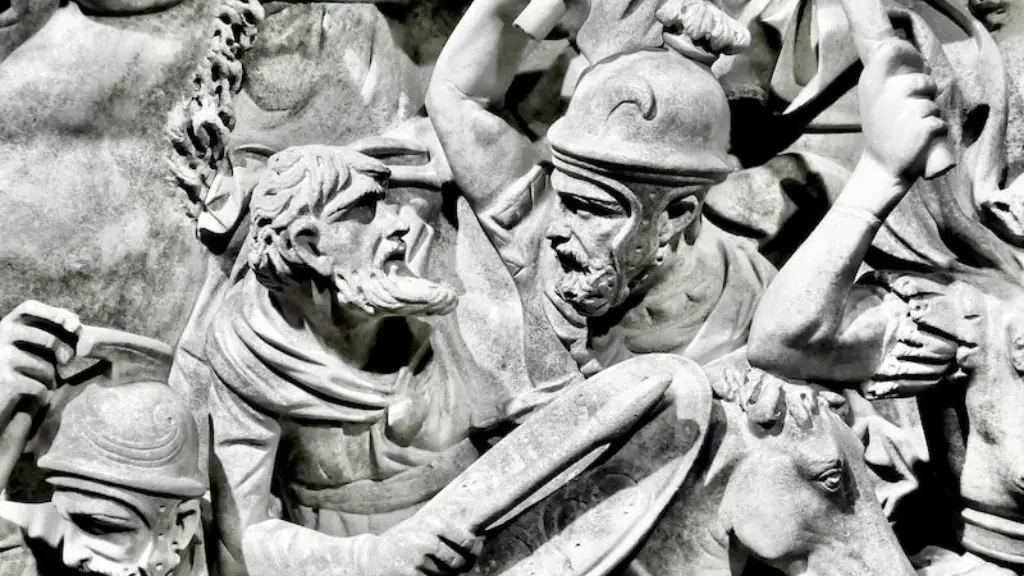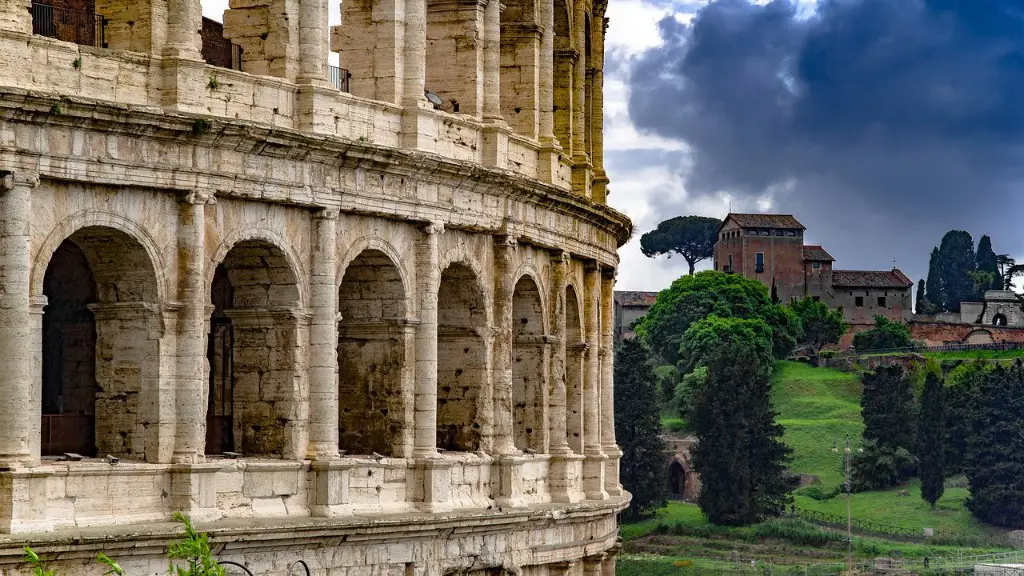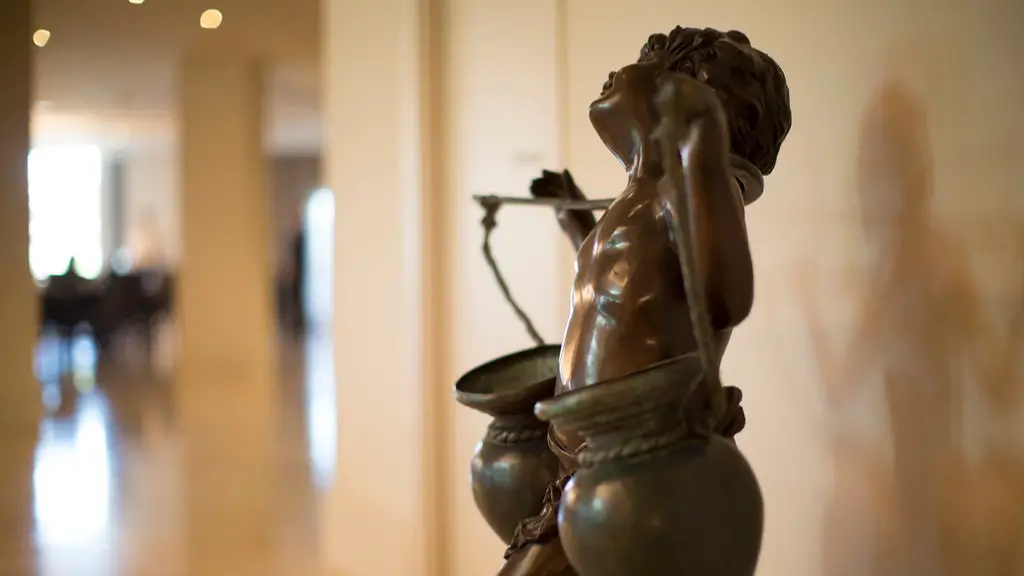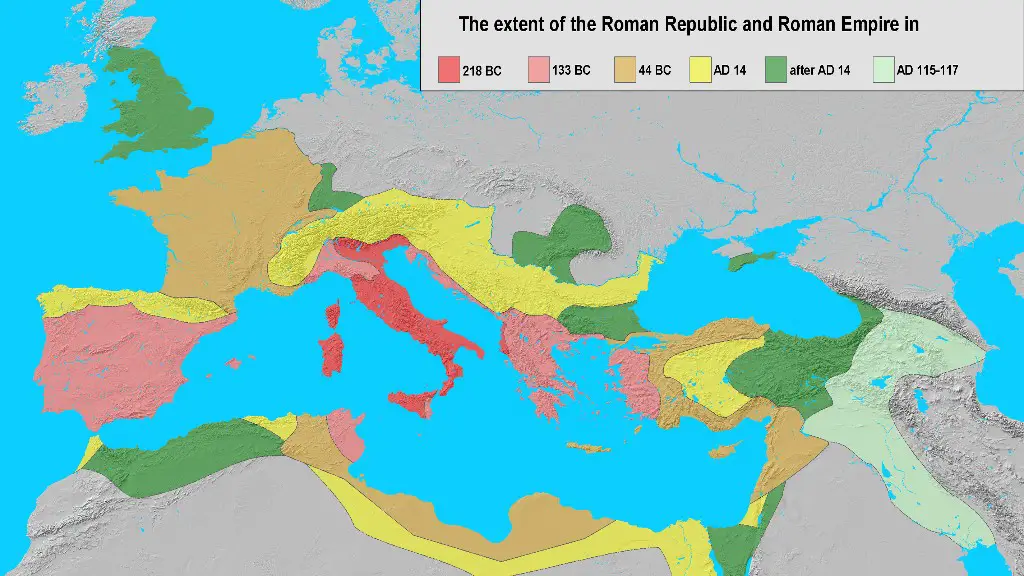At the height of the Ancient Roman Empire, the idea of the ‘barbarian’ was used to describe a group of non-Romans or those who posed a military threat to the Roman state. The term ‘barbarian’ (which derives from the Greek word for stammering or for uttering unintelligible sounds) served both to reinforce the politics of conquest and to defend Roman notions of civilization. It has been long believed that Rome saw the external world as being divided into two spheres – the civilised and the barbarian – the latter being more of a political construction than an ethnographic fact.
The typical ‘barbarian’ of Roman discourse was an enemy of Rome living beyond the boundaries of the Empire, typically viewed as less civilised, disorganised and violent. In the Roman imagination a ‘barbarian’ population was usually seen as a unified entity, regardless of whether they were Celts, Iberians, Thracians or even Germanic tribes. Despite this oversimplification by the Romans and their tendency to stereotype ‘barbarians’, however, the whole range of groups mentioned within this term actually constituted a much more diverse set of peoples with a variety of cultural beliefs, narratives and customs of their own.
During the time of Ancient Rome, the barbarians primarily posed a military threat to the Roman state by way of raiding and pillaging. For example, the Germanic tribes continually raided the Roman Empire from the north, while the Celts from the east often allied with Rome, particularly during the Punic Wars. These groups also posed a theological challenge to the Roman state: for example, the ongoing conflict between Christianity and Judaism was exacerbated by their practice of their respective faiths.
The Romans attempted to contain the ‘barbarian’ threat by constructing Hadrian’s Wall in Britain and providing military support to Gaul to prevent a Germanic crossing of the Rhine. Roman forces also fought against the ‘barbarian’ tribes in a series of conflicts, such as the Marcomannic Wars and the Gothic Wars, which saw the Empire losing land and resources each time. Despite this, the Roman Empire eventually succeeded in defending its borders against the ‘barbarians’ and solidifying its status as a major world power.
Over time, the tribes of ‘barbarians’ and their practices became more and more accepted in Roman society. For example, the Roman Senate eventually allowed some of the ‘barbarian’ tribes to participate in official Roman institutions, and the ‘barbarian’ tribes even adopted some aspects of Roman culture – particularly religion – which helped to create a unified society in the late Empire. Ultimately, the ‘barbarian’ tribes and their culture were integrated into the Roman Empire, thus becoming part of it.
Persecution of the Barbarians
Persecution of ‘barbarians’ by the Roman Empire was commonplace. These people were often enslaved and forced to work in mines or participate in other manual labour. In addition, they were sometimes subjected to torture or execution, particularly as a result of their role in military campaigns. The Romans were known to punish ‘barbarians’ harshly for any perceived disobedience, and also to take punitive measures against entire tribes if they were seen to be unable or unwilling to obey Roman laws.
The Romans also sought to ‘civilise’ the ‘barbarians’ through various methods. This included sending Roman administrators to the ‘barbarian’ homelands to teach them about Roman ways and provide legal advice. Unfortunately, these measures were often ineffective as many ‘barbarians’ refused to assimilate into Roman culture. Furthermore, these efforts often had the unintended effect of further antagonising the ‘barbarian’ peoples and exacerbating their resentment of the Roman state.
The legacy of the ‘barbarians’ during the time of Ancient Rome is an important part of European history. The ‘barbarians’ were a significant force in the shaping of Roman culture and their influence can still be seen today. Despite the Romans’ efforts to repress them, the ‘barbarian’ tribes were able to resist Roman domination and ultimately play a large role in the fall of the Western Roman Empire.
Barbarian Empires
The ‘barbarian’ tribes of Ancient Rome eventually became powerful forces in their own right. After the fall of the Western Roman Empire, some of the ‘barbarian’ tribes formed their own empires, such as the Franks, the Visigoths, and the Ostrogoths. These empires had their own governments, taxation systems and laws, setting them apart from the Roman Empire. These ‘barbarian’ emperors were responsible for the expansion of Christianity, the codification of laws, and the establishment of universities and schools. Over time, these ‘barbarian’ emperors were accepted into the empires they had once sought to conquer, becoming part of their councils and often marrying into the ruling families.
The legacy of the ‘barbarian’ tribes also includes a large number of works of art, literature, and architecture. Examples of these are seen in the many Gothic cathedrals and statues which were built to honour these tribes. The ‘barbarian’ cultures also left behind valuable manuscripts, such as the Beowulf epic, which is one of the earliest surviving documents from the ‘barbarian’ period. Much of the literature and art produced by these ‘barbarian’ cultures is still studied and admired by scholars today.
During the time of Ancient Rome, the ‘barbarian’ tribes were seen as a major threat to the Roman Empire. Despite their attempts to repress them, the ‘barbarian’ tribes were able to maintain their independence and eventually become powerful forces in their own right. The legacy of the ‘barbarians’ is still seen in modern-day Europe, where many aspects of their culture and art still remain. These tribes were critical to the shaping of Europe and the fall of the Western Roman Empire, and their influence can still be felt in current times.
Economic Impact of Barbarians
The ‘barbarians’ also had a significant economic impact on the Ancient Roman Empire. By looting and raiding Roman settlements, they often managed to acquire valuable goods, such as food, weapons, and clothing. The raids also caused Roman merchants to suffer by driving down prices for their goods. This in turn caused a drop in revenue for the Roman Empire and potentially hindered their economic growth.
The ‘barbarians’ also disrupted the Roman transportation of goods. In order to protect the transportation of goods from their settlements, the Romans had to send out armies to guard the routes. This was an additional cost to the Roman state and also put a strain on their resources, taking away resources and attention from other more important tasks.
The ‘barbarians’ also disrupted the markets of Roman traders in the provinces of the Empire. This was done either through raiding Roman merchants or by offering cheaper goods than the Romans, thus driving them out of business. This in turn caused the Roman Empire to lose significant amounts of revenue in their provinces.
The ‘barbarians’ also caused disruption to Roman agriculture by raiding Roman farms and settlements and preying upon the livestock and crops. In some cases, this led to food shortages in the Roman Empire as the ‘barbarians’ took away the food supplies. This would have had a major economic effect on the Roman Empire, as it would have resulted in prices for food rising and fewer goods being produced due to a lack of resources.
Cultural Influences
The ‘barbarians’ of Ancient Rome had considerable cultural influences on the Roman Empire. Through their raids, they introduced many of the customs, beliefs, and language that can be seen in later Roman culture. The ‘barbarians’ also shared their knowledge of war, farming, and architecture, which resulted in the Romans adopting many of these practices and beliefs.
The ‘barbarians’ also had a large influence on Roman religion. Many of the gods and goddesses of the Ancient Roman pantheon were adopted from the ‘barbarian’ beliefs. This included the cult of the goddess Cybele which was adopted by the Romans and eventually became much more prominent in the association of gods worshipped by the Romans.
The ‘barbarians’ also had a lasting impact on Roman literature, with much of the poetry and narrative accounts composed by the Romans inspired by their interactions with the ‘barbarians’. Furthermore, ‘barbarians’ themselves wrote many works, including the epic of Beowulf which is still read today. This reflects the influence of the ‘barbarians’ and their culture on the Roman Empire.
The ‘barbarians’ of Ancient Rome were a significant force in the shaping of the Roman Empire. Their interactions with the Roman Empire led to a diversification of culture and the introduction of new practices, beliefs, and language. Moreover, the ‘barbarians’ also had a major economic impact on the Roman Empire and contributed to its eventual downfall by disrupting trade and agriculture. The legacy of the ‘barbarians’ is still felt in Europe today, with many of their art, literature, and cultural practices still surviving in modern times.




